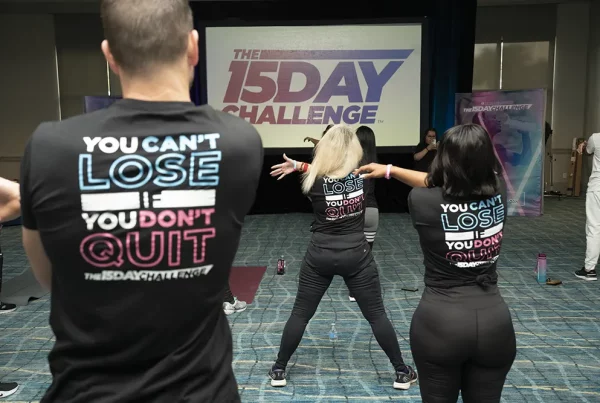What Is Brisk Walking? | What to Keep In Mind When Brisk Walking | Benefits of Brisk Walking | Conclusion
Performing any physical activity has been recommended by doctors and health workers to help improve your health. Among these activities, walking gives you many health benefits.
Walking is one of the recommended prenatal physical activities(1) among expectant mothers as part of their birth plan.
People with hypertension may consider walking or other alternatives like reducing caffeine consumption to lower blood pressure(2). Some individuals may also resort to alternative treatments for hypertension as part of their treatment and lifestyle change.
Walking also comes in different forms. You can walk in a slow, leisurely manner or in a fast-paced, brisk manner.
This article will discuss what brisk walking is, including its benefits and how this form of exercise compares to other forms of walking.
What Is Brisk Walking?
Brisk walking is a form of walking that is faster than a stroll. On average, a brisk walk can cover a distance of three miles an hour(3).
Brisk walking is a simple but sometimes overlooked form of exercise that provides many benefits. These advantages include burning calories, improving memory and sleep, strengthening bones and muscles, and preventing various illnesses.
Since brisk walking is a more vigorous form of walking, the World Health Organization (WHO) recommends spending 75 to 150 minutes(4) performing this activity every day.
What To Keep In Mind When Brisk Walking
You can walk out of your room and start brisk walking right away. But the experience is a lot better if you treat brisk walking like any other exercise routine.
Consider planning out your route first. This activity can help you monitor your distance and time. Planning your route will also help you avoid areas that may disrupt your walks, such as cracked pavements, potholes, or uneven ground.
Warm up before walking and cool down before taking a rest. Just like any exercise, walking requires that you condition your muscles first. Do some stretching to improve blood flow.
Since it is recommended to perform this exercise regularly, you have to stay motivated to keep going. Consider taking steps to stay motivated, such as setting measurable goals or varying your walk routine.
 Benefits of Brisk Walking
Benefits of Brisk Walking
How to Reduce Body Fat
Brisk walking for even just 30 minutes can burn around 200 calories(5). This duration can vary depending on your weight. In general, brisk walking burns calories faster than walking at a slower pace.
A study showed that walking contributed to a significant reduction in hip circumference among women and increased distance covered within a set time(6).
If you are battling obesity and want to achieve a healthy figure, regular brisk walking contributes to weight reduction.
Improve Memory and Sleep
Walking contributes to better memory retention and improves your sleeping habits. Studies showed that women between 50 and 75 who take one-hour morning walks were more likely to recover from insomnia than those who do not(5).
According to the WHO, performing higher physical activity levels, such as brisk walking, for 75-150 minutes per day improves sleep, cognitive health, and mental health(4).
This duration is significantly shorter than the WHO recommendation for moderate physical activities, like walking at a slower pace, which is around 150 to 300 minutes.
WHO’s recommendation means that you get the same benefits from brisk walking at a shorter amount of time than regular walking.
Strengthen Bones and Muscles
Aside from weight reduction and sleep improvement, walking is also beneficial for your bones and muscles.
Since blood does not go directly to most of your joints, it is through movement that your joints may receive nutrition(5). And what simple and better way to do that than to walk?
Doing regular brisk walking improves muscular, bone, and cardiorespiratory fitness. This exercise also helps prevent or reduce the risk of hip or vertebral fractures.
Among children and adolescents, walking also contributes to stronger bone health(7). If you or anyone you know has broken bones that limit physical activity, there are ways to detect common bone fractures such as ankle, foot, or hip fractures.
Prevent Various Illnesses
People with chronic diseases and other disabilities can benefit from brisk walking.
If done regularly, brisk walking can prevent or lower the risk of developing some of these conditions, including heart disease, hypertension, stroke, several types of cancer (e.g., breast cancer and colon cancer), and diabetes.
WHO recommends limiting the time spent in a sedentary state and spending 75 to 150 minutes of vigorous physical activity every day to prevent or reduce these chronic conditions.
Conclusion
Brisk walking is not necessarily the only simple exercise you can do to improve your health.
You can go for slower walks if you want to appreciate your surroundings a little longer or even start jogging or running to burn calories faster. Just remember to make the proper preparations and warm-up exercises before performing your activities.
For such a simple activity, brisk walking already gives you a lot of benefits. To achieve better health results, consider combining brisk walking with other physical exercises.
References
1. Physical activity and pregnancy
https://doi.org/10.1080/02701367.2012.10599138
2. Physical activity and the prevention of hypertension
https://dx.doi.org/10.1007%2Fs11906-013-0386-8
3. Walking for health
https://www.nhs.uk/live-well/exercise/walking-for-health/
4. Physical activity
https://www.who.int/news-room/fact-sheets/detail/physical-activity
5. 12 benefits of walking
6. Effectiveness of long and short bout walking on increasing physical activity in women
https://dx.doi.org/10.1089%2Fjwh.2010.2019
7. 5 most frequently broken bones
https://www.tanner.org/the-scope/5-most-frequently-broken-bones
Author’s Bio:
Fay Smith has a bachelor’s degree in English Literature. She worked in communications for five years before settling down with her husband. After getting married, she decided to write freelance for wellness products.














